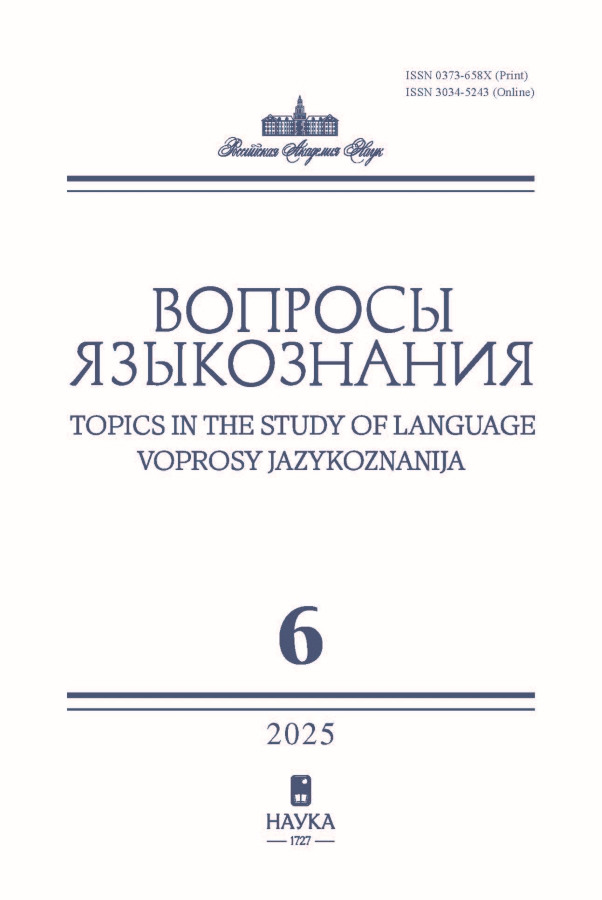Tocharian A manuscript №№ 144–211 from Šorčuq: The new data. I
- Authors: Itkin I.B.1,2
-
Affiliations:
- Institute of Oriental Studies, Russian Academy of Sciences
- HSE University
- Issue: No 1 (2023)
- Pages: 132-150
- Section: Articles
- URL: https://journals.rcsi.science/0373-658X/article/view/126359
- DOI: https://doi.org/10.31857/0373-658X.2023.1.132-150
- ID: 126359
Full Text
Abstract
The article provides a general description of the Tocharian A manuscript №№ 144–211 according to the publication of Tocharian A texts by E. Sieg and W. Siegling (1921). This manuscript is a collection of stories about prince Nanda, the half-brother of Buddha, and Sundari, his beloved. Many fragments of this manuscript, both published and still unpublished, join together. The article publishes two leaves made up of joined fragments — A 144 + THT 2485 and A 171+156 + THT 2543 + THT 2265 — with a detailed commentary and translation. The first leaf describes the beginning of Buddha and Nanda’s journey to the Himalayas and, further, to the world of the Thirty-three Gods (Skr. trayastriṃśa-). The second leaf presents a dialogue between two followers of Buddha — the young women Viśākhā and Preṣikā. A whole variety of elaborately used figures of speech (realization of the metaphor, chiasmus, deliberate syntactic ambiguity, etc.) allows to call this dialogue, whose text can be reconstructed almost fully, a pearl of the Buddhist literature of the Early Middle Ages.
Keywords
About the authors
Ilya Borisovich Itkin
Institute of Oriental Studies, Russian Academy of Sciences; HSE University
Author for correspondence.
Email: voprosy@mail.ru
Russia, Moscow
References
- Adaktylos et al. 2007 — Adaktylos A.-M., Fellner H., Koller B., Malzahn M., Simma K., Staudinger R. A concordance to the unedited Tocharian texts of the Berlin Turfan Collection. Instrumenta Tocharica. Malzahn M. (ed.). Heidelberg: Winter, 2007, 39–78.
- Adams 2013 — Adams D. Q. A dictionary of Tocharian B. Revised and greatly enlarged. Vol. I–II. Amsterdam: Rodopi, 2013.
- Aśvaghoṣa’s Gold 2015 — Aśvaghoṣa’s Gold. Translations of Buddhacarita and Saundarananda by Mike Cross. E‑publication, 2015. http://mike-cross.buddhasasana.net/asvaghosas-gold/asvaghosas-gold.pdf.
- Carling 2000 — Carling G. Die Funktion der lokalen Kasus im Tocharischen. Berlin: De Gruyter, 2000.
- Carling 2009 — Dictionary and thesaurus of Tocharian A. Vol. 1: A–J. Compiled by Gerd Carling in collaboration with Georges-Jean Pinault and Werner Winter. Wiesbaden: Harrassowitz, 2009.
- CEToM — A comprehensive edition of Tocharian manuscripts. http://www.univie.ac.at/tocharian/.
- Itkin 2002 — Itkin I. B. The linguistic features of Tocharian A manuscript Maitreyāvadānavyākaraṇa. Manuscripta Orientalia, 2002, 8(3): 11–16.
- Itkin 2014 — Itkin I. B. Apologia for the brahmin Bādhari: Some remarks on the meaning of the Tocharian A words ṣtare, pi- and māl. Tocharian and Indo-European Studies, 2014, 15: 69–77.
- Itkin 2019 — Itkin I. B. Tokharskaya A rukopis’ №№ 144–211 iz Shorchuka: novye dannye. [Tocharian A manuscript №№ 144–211 from Šorčuq: The new data. II]. Vestnik Instituta vostokovedeniya RAN, 2019, 3: 275–292.
- Itkin, Malyshev 2016 — Itkin I. B., Malyshev S. V. Three unedited Sanskrit/Tocharian A bilingual texts of the Varṇārhavarṇastotra. Manuscripta Orientalia, 2016, 22(2): 3–8.
- Itkin, Malyshev 2021 — Itkin I. B., Malyshev S. V. Notae Tocharicae: apälkāts, pärsā(n)ts, letse et autres addenda et corrigenda-4. Voprosy Jazykoznanija, 2021, 3: 47–75.
- Ivanov 1992 — Ivanov Vyach. Vs. Pamyatniki tokharoyazychnoi pis’mennosti [Monuments of the Tocharian writing]. Vostochnyi Turkestan v drevnosti i rannem srednevekov’e. Moscow: Nauka, 1992, 222–270.
- Ji et al. 1998 — Ji Xianlin (in collaboration with W. Winter and G.-J. Pinault). Fragments of the Tocharian A Maitreyasamiti-Nāṭaka of the Xinjiang Museum, China [Transliterated, translated and annotated by …]. Berlin: De Gruyter, 1998.
- Kölver 1965 — Kölver B. Der Gebrauch der sekundären Kasus im Tocharischen. Ph.D. diss., Univ. Frankfurt am Main, 1965.
- Malzahn 2007 — Malzahn M. A preliminary survey of the Tocharian glosses in the Berlin Turfan collection. Instrumenta Tocharica. Malzahn M. (ed.). Heidelberg: Winter, 2007, 301–319.
- Malzahn 2010 — Malzahn M. The Tocharian verbal system. Leiden: Brill, 2010.
- Pinault 2008 — Pinault G.-J. Chrestomathie tokharienne. Textes et grammaire. Leuven: Peeters, 2008.
- Poucha 1955 — Poucha P. Thesaurus linguae Tocharicae dialecti A. Praha: Státní Pedagogické Nakladatelství, 1955.
- Sieg 1944 — Sieg E. Übersetzungen aus dem Tocharischen I. Abhandlungen der Königliche Preussischen Akademie der Wissenschaften. Philologisch-historische Klasse 16. Berlin: Akademie der Wissenschaften, 1944.
- Sieg, Siegling 1921 — Tocharische Sprachreste. Bd. 1.: Die Texte. Sieg E., Siegling W. (Hg.). Berlin: De Gruyter, 1921.
- Sieg et al. 1931 — Sieg E., Siegling W. Tocharische Grammatik. Im Auftrage der Preussischen Akademie der Wissenschaften bearbeitet im Gemeinschaft mit W. Schulze. Göttingen: Vandenhoeck & Ruprecht, 1931.
- Siegling PK — Personal and annotated copy of [Sieg, Siegling 1921] by Wilhelm Siegling. Scanned by Douglas Q. Adams with the technical assistance of Michael Tarabulski and Kevin Dobbins. http:// www.univie.ac.at/tocharian/ Siegling, pers. copy.
- Tamai 2007 — Tamai T. A preliminary edition of unpublished texts from the Berlin Turfan Collection. E-publication, 2007. http://titus.fkidg1.uni-frankfurt.de/texte/tocharic/thtframe.htm.
- Thomas 1964 — Thomas W. Tocharisches Elementarbuch. Bd. 2. Heidelberg: Winter, 1964.
- Van Windekens 1976 — Van Windekens A. J. Le Tokharien confronté avec les autres langues indo-européennes. Vol. 1: La phonétique et le vocabulaire. Louvain: Centre International de Dialectologie Générale, 1976.










